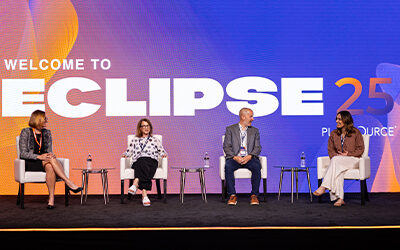5 Most Confusing Employee Benefits & How to Simplify Them
Nancy Sansom
High Deductible Health Plans
*Audible sigh* Yes, the dreaded high deductible health plan tops our list of the most misunderstood employee benefits.
Many employees are either scared away by the actual plan name (and can you blame them? ‘high deductible’ doesn’t exactly scream ‘pick me!’) or are lured in by the low premiums without actually understanding the full scope of how the plan pays for health care. And no matter how much information you cram into your annual benefits guide, taking a traditional approach to HDHPs will likely yield disappointing results—low enrollment or confused and angry employees.
In order to increase HDHP adoption and improve education, start with the plan name itself. Popular alternatives to ‘high deductible health plan’ include ‘HSA-eligible plan’ or ‘low premium plan’.
From there, add in short, ‘snackable’ educational materials, like video, to relevant spots in your communications and even directly within the benefits shopping experience if your platform allows.
Here’s an example of a video explaining HDHPs.
Access FREE materials in our benefits video library.
Benefits Accounts
Of course, you can’t talk about HDHPs without their trust companion—the HSA. But an HSA is just one of the three primary types of benefits accounts, which can quickly get confusing.
The best way to sort out the confusion? Take a visual approach with a simple chart that breaks down the primary features of benefits accounts and what’s applicable with each type. Or, if you only offer one benefits account, like an HSA for HDHPs, only speak to that specific account type and keep the information close to other relevant information—in this case, info on your HDHP.
In your communications, be sure to highlight the benefit of each account type, especially the tax advantages that make contributions a no-brainer.
According to our 2019 Benefits Benchmark Report, we are seeing contributions to benefit accounts increase, though there is still a long way to go. Your goal should be to help employees max out contributions, and the only way to make that happen is to clearly and concisely communicate the advantages of the savings.
If you do offer a benefits account, consider also making a contribution on behalf of employees. Remember, these accounts are tax-advantaged for employers too!
Telehealth
A remote doctor visit via video? It might sound unconvincing at first, but telehealth programs are on the rise as employers seek creative ways to drive down the cost of health care. The only problem? No one is using them—yet.
According to the National Business Group on Health, 70% of large companies offer a telehealth program, while only 3% of employees take advantage. Yikes.
The problem with telehealth? Awareness and understanding. Many employees are completely unaware of their telehealth benefits or they aren’t sure how to actually use them.
Making small tweaks in your communications plan and small investments in your education strategy can make HR a hero by putting telehealth front and center. This is another great area where video can be a highly effective tool to help explain telehealth. And, short, timely emails, like a quick reminder during cold and flu season, will keep the program and perks top of mind when it matters most.
Empathy, Innovation & Action: Top Takeaways from HR Leaders Who Spoke at Eclipse
Empathy, Innovation & Action:Top Takeaways from the HR Leaders Who Spoke at...
Charting the Future of PlanSource: Our Vision for What’s Ahead
Discover how PlanSource unveiled game-changing AI innovations at Eclipse 2025, transforming how HR leaders manage benefits and how employees choose them. The future of benefits starts here.
Navigating New Requirements with the Paperwork Burden Reduction Act
Navigating New Requirements with the Paperwork Burden Reduction...




